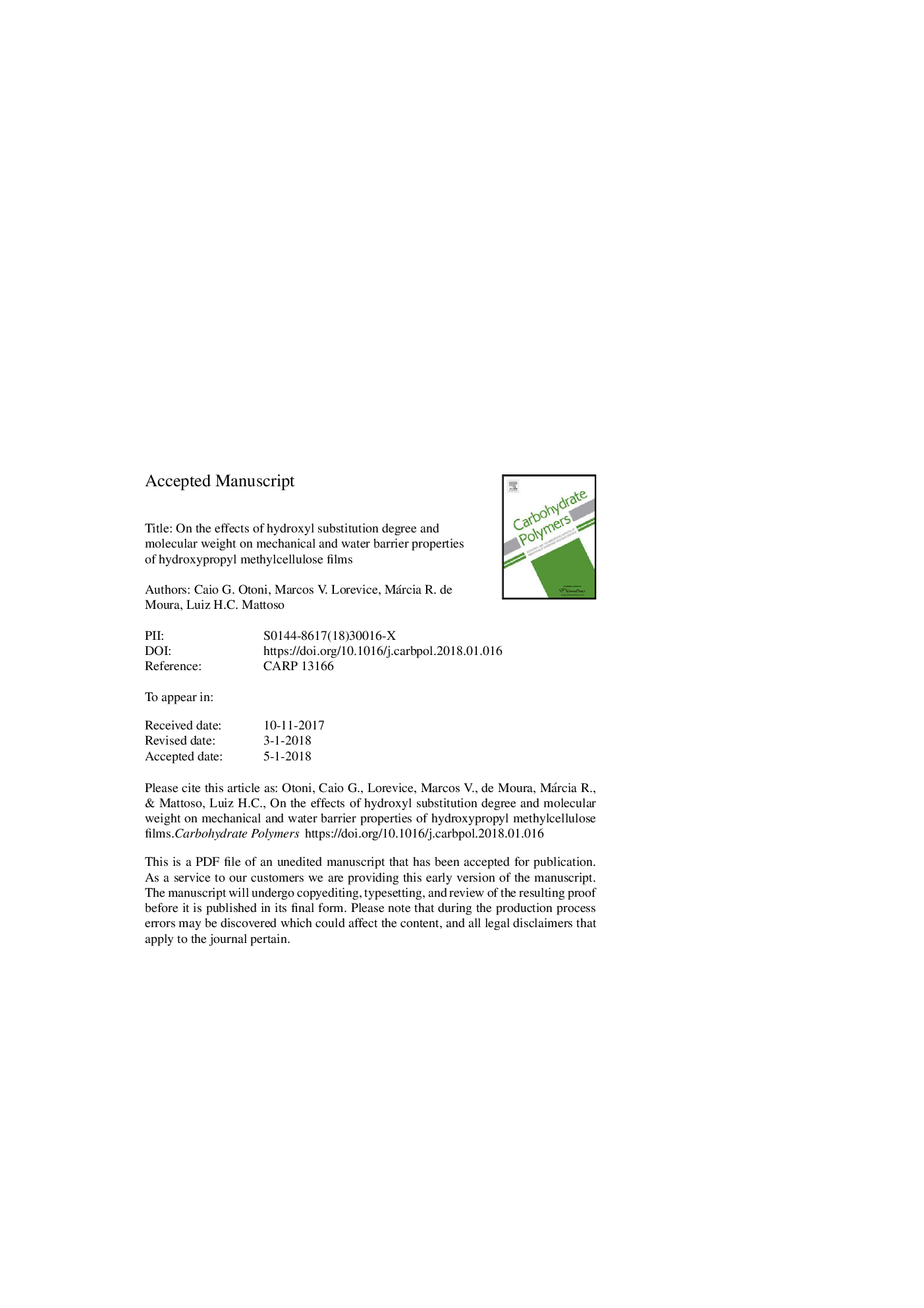| Article ID | Journal | Published Year | Pages | File Type |
|---|---|---|---|---|
| 7783753 | Carbohydrate Polymers | 2018 | 34 Pages |
Abstract
In line with the increasing demand for sustainable packaging materials, this contribution aimed to investigate the film-forming properties of hydroxypropyl methylcellulose (HPMC) to correlate its chemical structure with film properties. The roles played by substitution degree (SD) and molecular weight (Mw) on the mechanical and water barrier properties of HPMC films were elucidated. Rheological, thermal, and structural experiments supported such correlations. SD was shown to markedly affect film affinity and barrier to moisture, glass transition, resistance, and extensibility, as hydroxyl substitution lessens the occurrence of polar groups. Mw affected mostly the rheological and mechanical properties of HPMC-based materials. Methocel® E4â¯M led to films featuring the greatest tensile strength (ca., 67â¯MPa), stiffness (ca., 1.8â¯GPa), and extensibility (ca., 17%) and the lowest permeability to water vapor (ca., 0.9â¯gâ¯mmâ¯kPaâ1â¯hâ1â¯mâ2). These properties, which arise from its longer and less polar chains, are desirable for food packaging materials.
Keywords
Brunauer-Emmett-TellerGABDTGGRASMw/MnWVPDVSFFSHPCHPMCHP-SECDSCUS FDACellulose etherUnited States Food and Drug AdministrationFood packaginggenerally recognized as safeFourier-transform infrared spectroscopythermogravimetricDerivative thermogravimetricMolar substitutiondynamic vapor sorptionSubstitution degreeRelative humidityBiopolymerpolydispersity indexBETFT-IREdible filmCellulose derivativeWater vapor permeabilityHydroxypropyl celluloseHydroxypropyl methylcelluloseHypromelloseWeight average molecular weightNumber average molecular weightPMMAPoly(methyl methacrylate)Differential scanning calorimetryHigh-performance size exclusion chromatography
Related Topics
Physical Sciences and Engineering
Chemistry
Organic Chemistry
Authors
Caio G. Otoni, Marcos V. Lorevice, Márcia R. de Moura, Luiz H.C. Mattoso,
